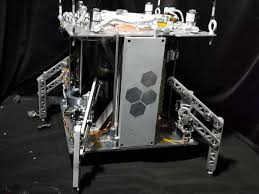
Breaking News
 NonConformist Series: Practical Wealth - Join us virtually Dec 29-30, 2025
NonConformist Series: Practical Wealth - Join us virtually Dec 29-30, 2025
 New bill would allow private citizens to fight cartels: 'WE ARE UNDER ATTACK'
New bill would allow private citizens to fight cartels: 'WE ARE UNDER ATTACK'
 Carnivore Got Me 90% There. This One Drink Changed Everything
Carnivore Got Me 90% There. This One Drink Changed Everything
Top Tech News
 Perfect Aircrete, Kitchen Ingredients.
Perfect Aircrete, Kitchen Ingredients.
 Futuristic pixel-raising display lets you feel what's onscreen
Futuristic pixel-raising display lets you feel what's onscreen
 Cutting-Edge Facility Generates Pure Water and Hydrogen Fuel from Seawater for Mere Pennies
Cutting-Edge Facility Generates Pure Water and Hydrogen Fuel from Seawater for Mere Pennies
 This tiny dev board is packed with features for ambitious makers
This tiny dev board is packed with features for ambitious makers
 Scientists Discover Gel to Regrow Tooth Enamel
Scientists Discover Gel to Regrow Tooth Enamel
 Vitamin C and Dandelion Root Killing Cancer Cells -- as Former CDC Director Calls for COVID-19...
Vitamin C and Dandelion Root Killing Cancer Cells -- as Former CDC Director Calls for COVID-19...
 Galactic Brain: US firm plans space-based data centers, power grid to challenge China
Galactic Brain: US firm plans space-based data centers, power grid to challenge China
 A microbial cleanup for glyphosate just earned a patent. Here's why that matters
A microbial cleanup for glyphosate just earned a patent. Here's why that matters
 Japan Breaks Internet Speed Record with 5 Million Times Faster Data Transfer
Japan Breaks Internet Speed Record with 5 Million Times Faster Data Transfer
Steam-powered spaceship could cruise the cosmos indefinitely without running out of gas

Come one, come all and behold the future of space travel: steam power!
No, seriously; half a century after the world's first manned space mission, it seems that interplanetary travel has finally entered the steam age. Scientists at the University of Central Florida have teamed up with Honeybee Robotics, a private space and mining tech company based in California, to develop a small, steam-powered spacecraft capable of sucking its fuel right out of the asteroids, planets and moons it's exploring.
By continuously turning extraterrestrial water into steam, this microwave-sized lander could, theoretically, power itself on an indefinite number of planet-hopping missions across the galaxy — so long as it always lands somewhere with H20 for the taking.
"We could potentially use this technology to hop on the moon, Ceres, Europa, Titan, Pluto, the poles of Mercury, asteroids — anywhere there is water and sufficiently low gravity," Phil Metzger, a UCF space scientist and one of the chief minds behind the steampunk starship, said in a statement. Metzger added that such a self-sufficient spacecraft could explore the cosmos "forever."
Metzger and his colleagues call the lander WINE (short for "World Is Not Enough"), and a prototype of the craft recently completed its first test mission on a simulated asteroid surface in California. Using a compact drilling apparatus, the lander successfully mined the fake comet for water, converted that H20 into rocket propellant and launched itself into the air using a set of steam-powered thrusters.

 Aluminum Causes Brain Damage
Aluminum Causes Brain Damage Advanced Propulsion Resources Part 1 of 2
Advanced Propulsion Resources Part 1 of 2

